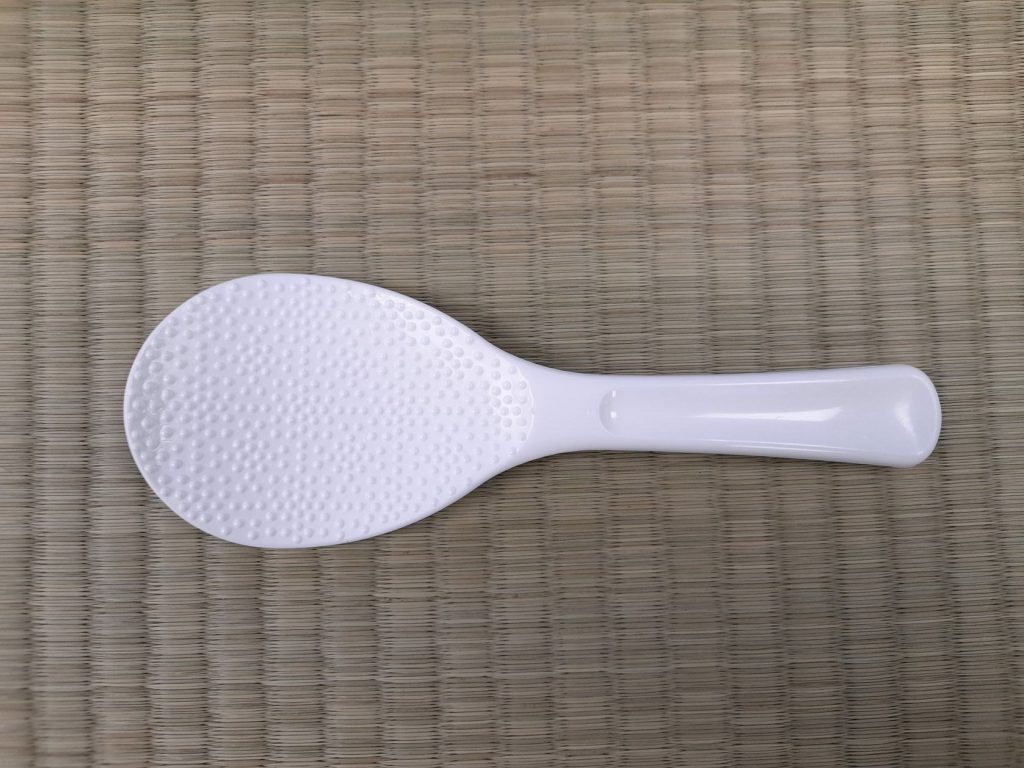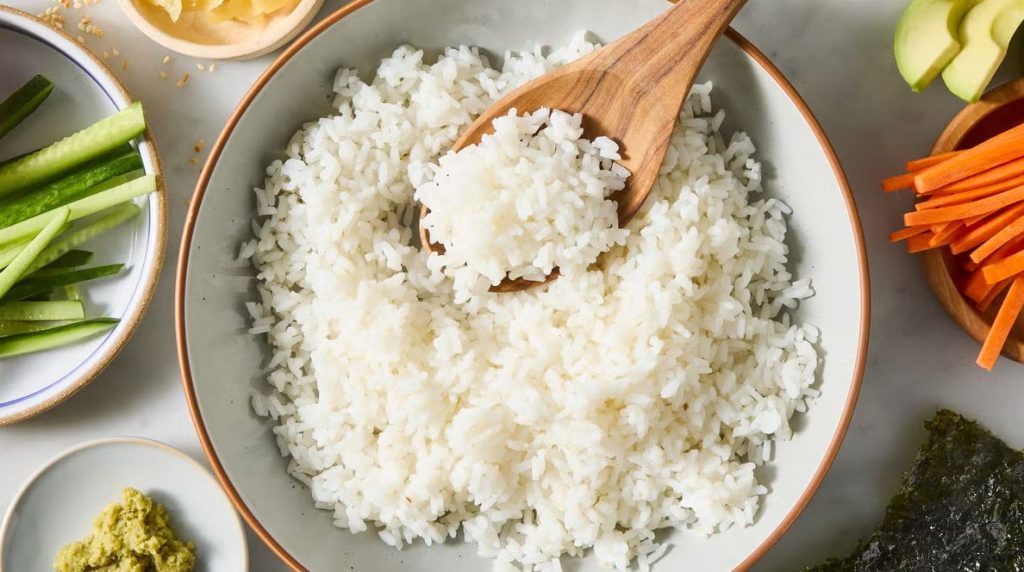If you’ve ever bought a rice cooker, you may have opened the box and found a curious little tool: a rice paddle. This utensil often looks like a wide, flat spatula with a rounded head and short handle. In Japan, this tool is called a a shamoji, and it is far more than a “freebie” it is essential to getting great results from your rice cooker. Rather than tossing it in a drawer with other gadgets you never use, it’s better to store it right beside the cooker so it’s always handy.
The Purpose of the Rice Paddle
Rice cookers typically come with a nonstick inner pot. Because of that coating, metal or hard utensils can scratch or damage the surface, eventually causing peeling and performance problems. The rice paddle supplied with the cooker is made of plastic or wood (or other non-abrasive materials), which safely works with the nonstick liner. The paddle’s job is to stir, scoop, and serve rice and do so gently enough to preserve individual grains and avoid turning everything into mush. After the cooking cycle ends, stirring with the paddle helps release excess moisture and ensures that the rice texture is consistent throughout. This is especially helpful if you’re making sushi, since you can also use the paddle to gently fold in vinegar without smashing the grains.

Is a Rice Cooker Worth It?
A rice paddle might seem trivial, but many people find the rice cooker itself to be a true kitchen helper. If you cook rice often but aren’t always confident with stovetop methods a rice cooker can simplify the process. You add rice and water, hit a button, and it handles the rest. Most models also include a water guide to match rice types and quantities, reducing guesswork. Some models go further: they include settings for stews, curries, slow cooking, or quick cook modes. Features like delayed start let you plan ahead or “set and forget” meals without worrying about perfect timing.
Rinse Your Rice — Don’t Skip It
Before you cook, always rinse your uncooked rice until the rinse water runs clear. This step removes dust, debris, excess starch, and even traces of arsenic. Rinsing helps give you cleaner, lighter rice. For harder or thicker grains (such as brown, wild, or sushi rice), soaking for about 30 minutes can further soften them and improve texture.
Cooking Rice on the Stove (for Comparison)
It’s worth knowing how to cook rice without a rice cooker. For stovetop cooking:
Use a large pot so the rice can expand freely — don’t cram it into a tiny vessel.
Be precise with your water-to-rice ratios. For example:
- 1½ cups water per cup of long-grain white rice
- 1¼ cups water per cup of sushi rice
- 2¼ cups water per cup of short-grain brown rice
- Bring water + rice to a boil, then reduce heat and let it simmer, covered, until the water is absorbed (about 20 minutes for white, 45 minutes for brown).
- Remove from heat, let it rest for about 10 minutes, then gently fluff (using your paddle, if available).
- Don’t stir while cooking — stirring mid-process can break grains and lead to stickiness.
Extra Tips to Elevate Your Rice
- Cook rice in broth or part water/part coconut milk for extra flavor.
- Add spices like saffron or turmeric directly into the pot.
- After cooking, if grains are slightly stuck together, stir gently with oil or sauté over low heat.
- Cook in large batches, then portion and freeze for future meals. To reheat, add a splash of water and microwave or warm on the stovetop.
- Day-old rice is great for fried rice, soups, or rice pudding — it tends to hold up better and separate more easily.

Conclusion
A rice paddle may seem like a simple utensil, but it plays a vital role in preparing perfect rice. Its non-abrasive design protects your cooker’s inner pot, while its wide surface helps mix and serve without damaging delicate grains. When used properly, it prevents clumping and ensures every serving is light, fluffy, and evenly cooked. Beyond that, it represents the care and precision that define good cooking — even small tools can make a big difference. Whether you cook rice daily or only on occasion, keeping and using the rice paddle shows you value both quality and tradition in the kitchen.

















